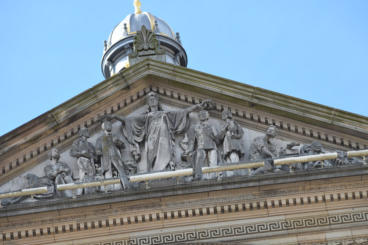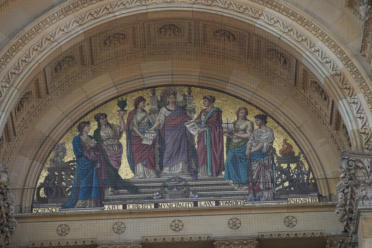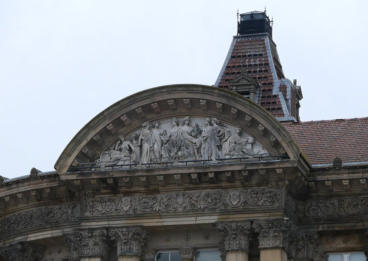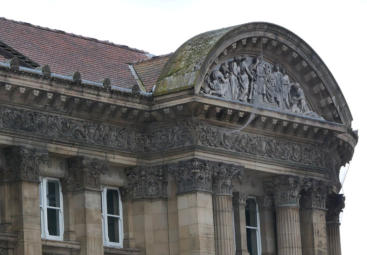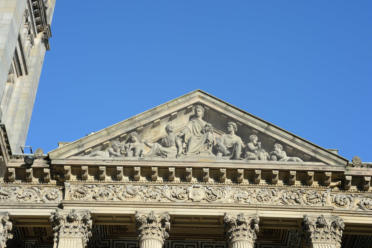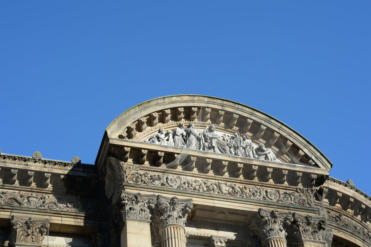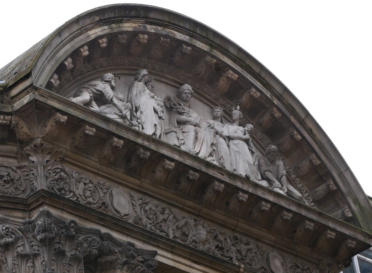Name:
Council House Pediment Sculptures
Sculptor:
Lockwood Boulton & Sons, decorative work
John Roddis
Installed:
1874-1879
Location:
Council House, Victoria Square
Birmingham’s Public Art
Britannia and Supporters (main elevation, centre)
The triangular centrepiece over the main entrance reflects
the pride of Birmingham in its manufacturing industry.
Britannia stands in the middle with outstretched arms.
Next to her stand suited factory owners, surrounded by
workmen with the tools of their trade and their products.
The Union of the Arts and Sciences (main elevation,
left)
One of the two seated central figures is shown with a steam
engine regulator, the other with a bust of Athena. To the
left are figures representing the arts: Sculpture, holding a
mallet, Painting and Music. To the right are the sciences.
Literature (main elevation, right)
A central seated angel is shown surrounded by figures,
several holding books.
Manufacture (Chamberlain Square elevation)
A seated central figure leans on a mallet and is surrounded
by different artistic and manufacturing including gun-
making and metal working.
Commerce (Eden Place elevation)
The central figure holds a ‘cadeucus’ a symbol associated
with the god Mercury and with merchants and commerce.
A boat and a steam engine are also depicted.
Council House Mosaic, 'Britannia rewarding the
Birmingham Manufactures' (main elevation, centre)
(Salviate Burke and Co, 1874-9, mosaic)The central figure of
the Municipality of Birmingham, handing out scrolls of
stability and power to the other figures identified in gilded
lettering, representing science, art, liberty, law, commerce
and industry.
Allegory of Fame Rewarding Art
(Francis Williamson, 1884)
Birmingham Museums and Art Gallery, B3 3DH
There is a smaller triangular pediment over the entrance to
the Art Gallery showing the painterly arts on the left and
the plastic arts on the right
Description
High up above on Council House.
Condition: Excellent
Oversight/Owner: Birmingham City Council
Artist website:
Other Info: There has been some confusion with these
pieces and in particular detail is incorrect in George
Noszlopy’s book Public Sculpture of Birmingham.
